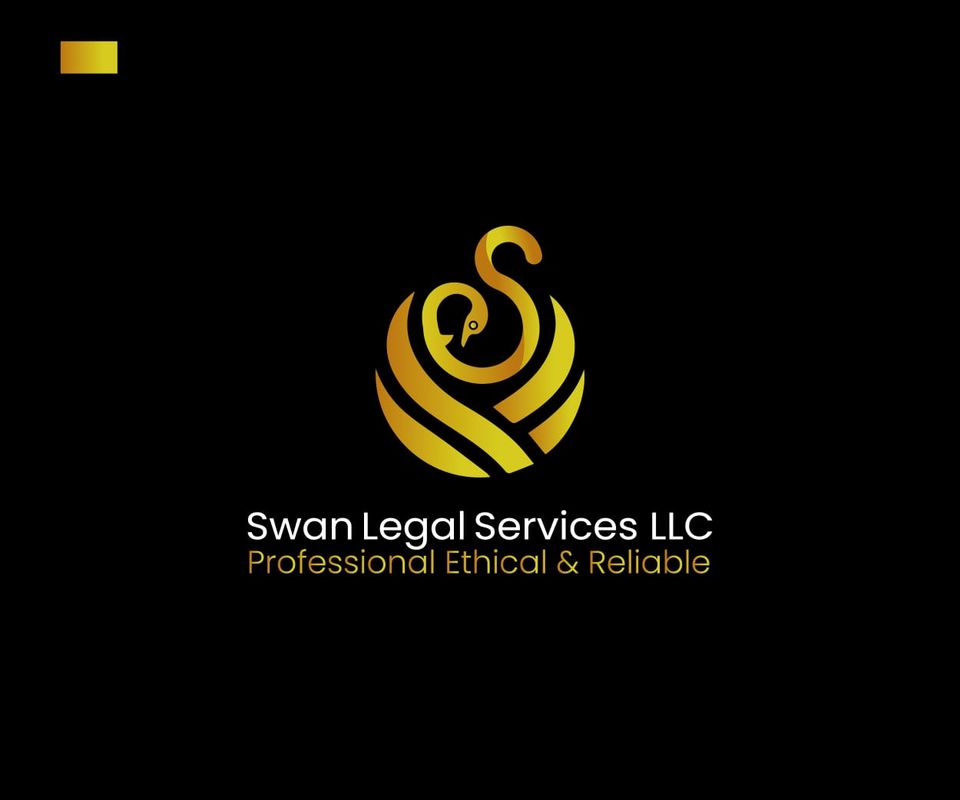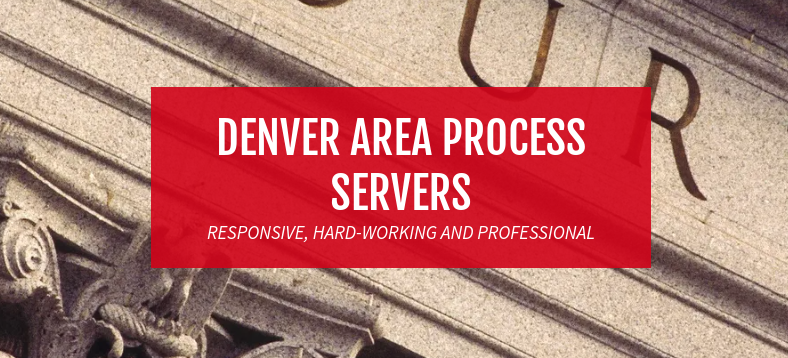 Eviction Process in Texas
Eviction Process in Texas
State-Specific COVID-19 Resources
Doing an Eviction in Texas can be broken down into 4 steps:
- Giving the Tenant a Notice to Vacate
- Filing an Original Petition to start a lawsuit against the Tenant
- Going to Court for your Hearing
- Filing a Writ of Possession to order the Constable to remove the Tenant
Understand Texas Eviction Laws
The first thing we need to go over are the laws that govern how to evict a tenant in Texas: In Texas, the legal term for eviction is “forcible entry and detainer.” A tenant who refuses to leave a rental house or apartment is said to be committing “forcible detainer.” Forcible detailer is covered in Chapter 24 of the Texas Property Code. I recommend reading through it, but here are a few of the highlights regarding the legal aspects of how to evict a tenant in Texas.
 DOWNLOAD FORMS YOU WILL NEED FOR THE EVICTION IN TEXAS
DOWNLOAD FORMS YOU WILL NEED FOR THE EVICTION IN TEXAS
Texas Landlord Tenant Eviction / Unlawful Detainer Forms Package
 The Texas Rental Agreement
The Texas Rental Agreement
Texas Residential Landlord Tenant Rental Lease Forms and Agreements Package
Notice to Vacate
Delivering the Notice to Vacate
The Notice must be delivered in accordance with Texas law to be valid. There are a couple different ways you can deliver it:
- Personal Delivery
You may hand deliver the notice to the tenant or to any person residing at the premises who is 16 years of age or older. You may also personally deliver the Notice to the property by affixing it to the inside of the main entry door (in case nobody is home). If the property has no mailbox, and there is no way for the landlord to enter the property (deadbolt, dangerous animal, etc.), then the Landlord may affix the Notice to the outside of the main entry door. - Mail
The law also allows you to mail the Notice to the tenant by regular mail, registered mail, or certified mail with a return receipt. However, some judges will not accept regular mail as a form of service, so it is highly recommended you send the notice by certified mail.
Time Periods
If you have a lease with a Tenant, check your lease to see how many days notice you must give a Tenant in the Notice to Vacate. The standard is 3 days, and if you do not have a lease with the Tenant, then it is 3 days. The clock starts ticking for them to vacate when the Notice is actually delivered (not when it is mailed). You MUST wait out your notice period (usually the 3 days) before you file your lawsuit.
Make Copies!
Make 2 copies of the Notice to Vacate before you deliver it. You will need one for the Court if you have to file a lawsuit (next section), and you need one for your records. If you personally deliver the Notice, it is a good idea to write on your copies what time of day you delivered it, and to whom you delivered it to.
The Original Petition
After your Notice period is up and the Tenant is still occupying your property, you need to go to Court for help. The way you do this is by filing a lawsuit against the Tenant called a “Forcible Entry and Detainer” lawsuit. This sounds tricky, but is actually quite simple.
You start the lawsuit by filing 2 forms:
- Original Petition
The Original Petition is what starts the lawsuit. Depending on the County, it is also called a Complaint, Original Complaint, Complaint for Eviction, Forcible Entry and Detainer, and other similar variations. Most Justice of the Peace Courts have an Original Petition that you can use available in their lobby, but you are almost always welcome to use your own as long as it complies with Texas Law. - Military Affidavit
This is more formerly called an “Affidavit of Military Status of Defendant.” The purpose of this form is to protect the rights of members of our military while they are off protecting us. You simply check whether or not you think your Tenant is in the military. This form is filed along with the Original Petition.
Where to File
You must file your lawsuit in a Justice of the Peace Court in the Precinct that your property is located in. Most counties in Texas are broken down geographically into Precincts. It is your job to find out what precinct your property is located in. There are a few ways to do this. You can go to your County’s website and see if they have a Precinct map. You can also call any Justice of the Peace Court in your County, give them your property’s address, and they will simply tell you. It is a good idea to call your Precinct before you go there to file so you can find out what hours they are open and what the filing fees are.
Filing Fees
Filing Fees are different for every Court, but they will generally be under $100.00, and that includes filing the case, having the Clerk prepare a Citation to be given to the tenant, and having the constable or sheriff serve (deliver) the Citation to the tenant.
Notarize the Forms
This is easy. You must get the Original Petition and Military Affidavit notarized before they are filed. The Court Clerk can do this for you when you go in to file the case. They may charge a small fee to do this.
Get your Court Date
When you file the Original Petition and Military Affidavit, the Court Clerk will give you a time and date for your eviction hearing (your court date). You will show up to Court on that date to prove your case to the judge.
Meanwhile, what is the Court Doing?
The Court Clerk is going to prepare a “Citation” that tells your Tenant they are being sued for possession of the property and when the court date is. The county constable or sheriff will then serve (deliver) the Citation and the Original Petition to your Tenant. Your Tenant must have at least 6 days between being served the Citation and the court date.
Going to Court
So now the Tenant has gotten your Notice to Vacate, has been served a Citation and Original Petition by the constable, and still has not vacated. It is now time to go to court.
Here is what to bring to court:
- A copy of your Notice to Vacate
- Your Lease with the Tenant
- Any witnesses you need to prove something (a lease violation perhaps)
- Any other evidence (warning letters, rent receipts, ledgers, etc)
When you show up for your court date, politely ask a clerk or bailiff where you should go for eviction hearings. They will usually direct you into a waiting room or directly into the courtroom. Always dress professionally and use your best manners when entering the courtroom. Do not, and I mean DO NOT allow your cell phone to ring in the courtroom. Some judges will confiscate it for 1 week, while others will fine you $500.00 on the spot.
The judge will give instructions to the courtroom, and will sometime “swear in” the entire room at once. When your case is called, you will go up in front of the judge. The judge will take control of the conversation, ask you questions, and tell you what to do.
If your Tenant does not show up, the judge will award you a “Default Judgment.” This means you win automatically because the Tenant did not show up to defend themselves. If your Tenant shows up and defends the case, then the judge will render a decision either in favor of you or the Tenant after you have both presented your sides. If the judge rules in your favor, then you will get a Judgment that says you are entitled to possession.
Now that you have won the initial suit, your Tenant has 5 days to leave or to file an appeal in the County Court. For your Tenant to file an appeal, they will have to post a bond, or submit a “Pauper’s Affidavit” alleging they cannot afford to post a bond. If your Tenant files this appeal, you will have to argue the case again at the County Court level.
Writ of Possession
So you have won your lawsuit, the 5 day appeal period has passed, and your Tenant is still there. On the 6th day from when you won your lawsuit, you may file a “Writ of Possession.” This form is available from the court where your lawsuit was, and will generally cost around $200.00 to file.
The Writ of Possession orders the Constable to oversee the physical removal of your Tenant and your Tenant’s property. The Constable will post a 24 hour Notice to Vacate on the property, and after that will show up and physically remove the Tenants if necessary. Talk to the Constable beforehand to see if you will need to bring people to move the Tenant’s belongings onto the curb.
Advanced Eviction in Texas: Faster ways to Evict
Bond for Immediate Possession
If you prevail in Court, doing an eviction by filing a Bond for Immediate Possession could shorten the eviction process down to 10 days. But if the Tenant requests a trial or appeals the case, the time will be just as long as a regular eviction case. This procedure includes giving a notice to the Tenant and posting a bond with the Court for surety or cash. If you lose your case, you will lose all or part of your bond. If you wish to file an eviction this way, contact the Justice of the Peace Court for your precinct and inquire as to procedure and forms.
Locking out a Tenant
Texas law provides a way to lock out a Tenant that is delinquent in paying rent. However, this is really more of a scare tactic, because the landlord has to let the Tenant back into the property immediately upon the Tenant’s request even if the Tenant does not tender the delinquent rent. There are strict rules on locking out a tenant so make sure you do this with good counsel. Here are the steps:
- 3 days before locks are changed, post a notice on the inside of the main entry door that says (A) the earliest date that the landlord proposes to change the door locks; (B) the amount of rent the tenant must pay to prevent changing of the door locks; and (C) the name and street address of the individual to whom, or the location of the on-site management office at which, the delinquent rent may be paid during the landlord’s normal business hours.
- Change the Lock, and at the same time place a notice on the front door that says (1) an on-site location where the tenant may go 24 hours a day to obtain the new key or a telephone number that is answered 24 hours a day that the tenant may call to have a key delivered within two hours after calling the number; (2) the fact that the landlord must provide the new key to the tenant at any hour, regardless of whether or not the tenant pays any of the delinquent rent; and (3) the amount of rent and other charges for which the tenant is delinquent.
A landlord may not change the locks on the door of a tenant’s dwelling on a day, or on a day immediately before a day, on which the landlord or other designated individual is not available, or on which any on-site management office is not open, for the tenant to tender the delinquent rent.
A landlord who intentionally prevents a tenant from entering the tenant’s dwelling must provide the tenant with a key to the changed lock on the dwelling without regard to whether the tenant pays the delinquent rent.
If a landlord arrives at the dwelling in a timely manner in response to a tenant’s telephone call to the number contained in the posted notice and the tenant is not present to receive the key to the changed lock, the landlord shall leave a notice on the front door of the dwelling stating the time the landlord arrived with the key and the street address to which the tenant may go to obtain the key during the landlord’s normal office hours.
If a landlord violates these provisions, the tenant may: (1) either recover possession of the premises or terminate the lease; and (2) recover from the landlord a civil penalty of one month’s rent plus $500, actual damages, court costs, and reasonable attorney’s fees in an action to recover property damages, actual expenses, or civil penalties, less any delinquent rent or other sums for which the tenant is liable to the landlord. For more information on the Texas eviction process, see Chapters 24 and 92 of the Texas Property Code by clicking here: Texas Property Code
Property Code Highlights
- Landlord must give a delinquent tenant at least 3 days written notice before filing an eviction suit
- The notice must be delivered by mail, in person to someone at the house who is at least 16 years old or taped to the inside of the main entrance door.
- If this method of delivery is impossible (for example there’s no one home and there’s a dangerous dog inside), you can tape the notice to the outside of the door and drop off a copy in the mail the same day.
- If a tenant is being evicted due to non-payment of rent, he/she can appeal but must pay the rent to the court within 5 days of the ruling.
- After 5 days of the ruling (on the 6th day), if the tenant hasn’t appealed and still hasn’t vacated the property, the landlord can request a “writ of possession.” This is the court order which will authorize the sheriff to physically remove the tenant and their possessions.
- You’re not required to hire an attorney to represent you in court
- In addition to these highlights, the Texas Property Code lays out rules for:
- Procedures to recover unpaid rent
- Ways the tenant can appeal an eviction
- How much rent the tenant owes
- How the landlord can make the tenant pay the landlord’s legal fees
- What the sheriff will do with the tenant’s property if a writ of possession is executed
Why Your Lease is Super Important
If you haven’t fulfilled your end of the contract, a tenant who fights an eviction could cause you a world of pain. In general, if you have a standard lease specific to Texas, just make yourself familiar with the terms of the lease. If you have a non-standard lease (one you wrote yourself or copied from the internet), you need to be familiar with Chapter 92 of the Texas Property Code, which discusses most of the rules regarding tenant/landlord relations. It’s also important to note that many of the stipulations of this chapter specifically nullify contradicting agreements even if specified in a lease. That’s why it’s important to use a good lease. In general, Texas is a very landlord friendly state, and the eviction process will not vary much from city to city. However, you should be aware that since this is handled at the county level, each county court will have specific procedures and requirements you must adhere to. In short, its relatively easy to evict a tenant in Texas, as long as you closely follow the eviction process. But it’s also important to note that certain cities in Texas have become increasingly “progressive” and it’s not outside the realm of possibility that they will pass ordinances in the future which hamstring a landlord.
Prepare for Eviction
As stated above, you need to have your ducks in a row before you start the eviction process in Texas. First, make sure you can clearly explain the reasons for evicting a tenant. If they haven’t paid the rent, that’s an easy one. But if you have heard rumors from neighbors about cheating spouses and you’re sick of getting calls from the neighbor, that’s not so easy.
1. Know your reasons for evicting a tenant
Make sure you understand all the valid reasons you can evict someone from your rental in Texas. Here is a list of the most common reasons evict a tenant in Texas:
-
Violation of lease agreement.
 It’s incredibly important that you have a valid lease agreement with every tenant. This will spell out in minute detail what is expected of you and of the tenant. It will also serve as your guide for when things go wrong. “Tenant is 4 days late with the rent? Oh, the lease agreement says this is what happens next…” Usually these leases are multiple pages long and will specify what kind of offense can lead to eviction. Here are the main ones I’ve faced:
It’s incredibly important that you have a valid lease agreement with every tenant. This will spell out in minute detail what is expected of you and of the tenant. It will also serve as your guide for when things go wrong. “Tenant is 4 days late with the rent? Oh, the lease agreement says this is what happens next…” Usually these leases are multiple pages long and will specify what kind of offense can lead to eviction. Here are the main ones I’ve faced:-
- Non-payment of rent.
- Unauthorized pets.
- Unauthorized tenants.
- Smoking
- Subleasing
- Damage to property
-
-
Illegal activity.
You don’t need to specify in the lease that your tenant shouldn’t be growing pot in the bathtub or turning the office into a meth lab. But there are less nefarious things a tenant might do that could land you (or them) in legal trouble, such as running a business out of the garage.
-
Removing house from rental market.
Eventually you might want to sell the house to do a 1031 exchange or you might want the tenants to move out so you can catch up on some deferred maintenance. You might want to move into the house yourself.
-
Health and safety violations.
If there is a danger to the tenants and their property, which you cannot resolve while they’re living there, you can evict them. So if mold has grown out of control, or you discover radon is seeping into the house, you have a moral and legal responsibility to protect the tenant.
-
Threats or unsafe behavior.
If a tenant is making threats or is doing things that are unsafe, you need to get rid of them. This doesn’t just include threats against you, but also against neighbors or even other tenants living under the same roof.
-
Providing false information on the lease application.
Bad tenants often lie, and often for the stupidest things. For us, this is unforgivable. You should have caught any issues during the application process, but sometimes people slip through the cracks. If the lease was signed under false premises, you might want to consider evicting the tenant.
-
Breaking HOA rules.
This is usually covered in the lease, but often it isn’t. Still, the HOA will be sending hate mail to you if there are HOA violations. HOAs usually don’t care who did or didn’t mow the grass, or whose boat is leaking on the driveway. They will hold you accountable. You can’t have a tenant costing you money.
Invalid reasons to evict a tenant in Texas:
-
You can’t evict a tenant in Texas for requesting repairs.
It is illegal to evict a tenant in retaliation for a legitimate repair request. Technically, you can do it after 6 months of this request
-
You can’t evict a tenant in Texas for reporting a complaint or exercising a legal right.
Similarly, you cannot evict someone in retaliation for filing a housing complaint against you or otherwise exercising a legal right. Yes, that includes being an outspoken supporter of your opposing political party.
-
You can’t discriminate in violation of fair housing laws.
According to the Fair Housing Act, you cannot discriminate against someone due to race, color, religion, national origin, sex, disability, or familial status. When would this apply to you? If a tenant changes religion, or gets a disability, or gets pregnant while living in your house, you cannot evict them for that reason.
-
You can’t evict a tenant in Texas if they’re a service member affected by military service.
Although military service doesn’t allow someone to avoid paying rent, a judge can block eviction for up to three months if that military service is making it hard to pay rent. The main situation that would apply here is if someone gets activated by their Guard or Reserve unit and loses their normal source of income.
Talk to tenant
The next step, and possibly the most important step, is to talk to the tenant. This can be an incredibly stressful conversation, especially if the tenant is intimidating or you don’t like confrontation. Lawyers will never tell you this, but most disagreements can be solved without getting judges and lawyers involved if the two parties will just talk. But what do I say? Here’s a template you can follow when having this difficult conversation:
Landlord: Hi [tenant name], I need to talk to you about a big problem we have
Tenant: Go away I hate you!
Landlord: Well, it’s come to my attention [someone told me, or I noticed] that you [thing the person has done to warrant eviction].
Tenant: That’s a damn lie!
Landlord: Unfortunately, I’ve investigated the issue and found it to be true. As you know, this is a violation of our lease. According to the lease I have to evict you. I’d rather not though. An eviction will cost of us money and it will really screw your credit. You might have a hard time finding a good place to live in the future if you have an eviction on your record.
Tenant: So, what are you going to do?
Landlord: Well, I have to begin the eviction process, but if you are out of the house before [date 3 days from now], I won’t have to file the suit with the court.
Tenant: How am I supposed to get out that fast?
Landlord: I know it’s a rough situation, I just wanted to let you know what was going to happen while you still have a chance to avoid this eviction. So on [date], I’ll come by and if the house is empty and in good condition, I won’t file the eviction.
Cover your Assets
It would be bad to file an eviction that gets challenged, and a downright nightmare to get countersued by the tenant. But this can happen if you’re not squeaky clean.
-
Make sure you are fulfilling your end of contract.
As the landlord, you have responsibilities to maintain the safe living conditions of your tenants. If you are a cheapskate or inattentive landlord, many tenants will push back. If a tenant has to pay for repair out of their own pocket, they are legally allowed to pay themselves back from the rent that they owe you (This is called “repair and deduct”). Similarly, consult the lease or a lawyer if you’re confused as to what exactly you’re responsible for. By law, you’re required to fix anything that affects the health or safety of your tenant, although if the tenant causes the damage through their own neglect, you typically don’t have to fix it.
-
Get paperwork right.
The administrative portion of filing an eviction poses the greatest risk to failure. You must deliver the paperwork to the right person, at the right times. It has to be clearly written (verbal notices don’t count). If you don’t follow all these steps, a sneaky tenant with a semi-decent lawyer will be able to challenge the eviction in court. This will needlessly draw out the eviction process because you’ll have to start all over again if you did something wrong.
-
Prove the violation.
It might go without saying but it’s an oft overlooked fact that if you’re prepared to go to court, you must be able to prove your assertions. If the tenant didn’t pay on time, that’s an easy thing to prove. It might be harder to prove they’ve been keeping the neighborhood up with their loud music. In many cases, you might need to bring in witnesses or provide physical evidence to show the tenant is in violation of the lease.
For the inexperienced landlord, these things can make a simple eviction process turn into a full-blown migraine. That’s why I recommend hiring a lawyer to help if you’ve never evicted a tenant before. Or better yet, hire a property manager.
The Texas Eviction Process
Ok, so you’ve done all you could to rectify the situation with the tenant. You’ve made sure you’ve upheld your end of the contract and even tried to reason with them. You have decided there is no other option but to proceed with the eviction. What now? What is the eviction process in Texas?
1. Deliver Notice to Vacate
The first step in the eviction process in Texas is you must give the tenant written notice to vacate the premises. You cannot file a suit with the court until three days after you’ve provided this notice. Here is how you are legally required to give the notice:
- Standard Situation: It must be delivered in person or by mail to the premises in question, in one of these manners:
- Option A. You can physically hand it to someone who resides at the house and is at least 16 years old.
- Option B. You can tape the notice to the inside of the main door.
- Option C. You can use any type of mail (doesn’t have to be certified mail, although I highly recommend sending certified mail with a return receipt requested so that you can show in court that the tenant received the mail).
- Jacked up Situation: If the residence doesn’t have a mailbox, and delivering in person could be risky or impossible:
- You tape the notice to the outside of the main door in a sealed envelope.
- The envelope must have the tenant’s name, address and “IMPORTANT DOCUMENT” written on it.
- By 5 pm of the same day you must mail a copy of the notice to the tenant from the same county where they reside.
- You tape the notice to the outside of the main door in a sealed envelope.
Once you’ve delivered the notice by one of these methods, the clock is ticking.
2. File Eviction Suit in Court
The next step will be to file the eviction suit with the court. You have to file the eviction in the precinct where the rental property is located. Every county is a bit different but in general you will have to provide the following information:
- Name and contact information of tenant
- Name and contact information of landlord (and attorney, if applicable)
- Address and description of the rental property
- Reason for eviction
- Date the defendant took possession of the property (moved in)
- Date and method the Notice to Vacate was given
- Any amount owed by tenant (under $10,000)
- Whether tenant is a member of the military, and in what capacity
- Filing fee (typically around $100 but goes up depending on how many tenants there are)
If the tenant owes you less than $10,000 (like unpaid rent or damages), you can include that with the eviction suit. Once you’ve filed this paperwork, the county clerk will hand the case off to the constable, who will serve the tenant with a citation declaring the suit and summons to court.
3. Go To Court Hearing
After you have filed the eviction suit, the court hearing comes next. If you’ve followed the advice outlined above to prepare yourself for the eviction, you should be good-to-go.
On the day of the hearing, make sure you show up early. You’re in a habit of always showing up early for important things, right? Good!
Remember, the burden of proof will be on the landlord. You must prove your case against your tenant. You need to make sure any witnesses are there on time, and you bring any evidence which supports your claim. Here’s a list of what you should bring:
- Copy of the deed
- Copy of the lease
- Rent receipts
- Rent ledgers
- Bank statements
- Witnesses
- Complaints from other tenants or neighbors
- Pictures or video, if applicable, especially if there’s damage
- Copies of, or summary and description of, correspondence between tenant and landlord
Here’s what could happen at the trial:
- The tenant doesn’t show up. You automatically win! The court will rule against the tenant and give them 5 days to vacate or appeal the ruling.
- The judge rules in your favor. The tenant has 5 days to vacate or appeal the ruling. This ruling will also include how much the tenant owes you, including court costs, rent, and any damages.
- The judge rules against you. Yikes! Now YOU have 5 days to appeal the ruling. At this point, you realize you messed up something and you should probably go find a lawyer (or fire your lawyer and find a better one).
4. File Writ of Possession
If you truly have a tenant from hell, they are now going to refuse to move. Also, if they’re smart, they’ll file an appeal, which will drag on the process even longer.
Now what? Well if they haven’t moved out in accordance with the judge’s order within 5 days, and they haven’t filed an appeal, you will have to go back to the court and request a Writ of Possession. This is a court order which allows the constable to oversee the removal of the tenant. And yes, you’re going to have to pay another filing fee to get the Writ of Possession.
Once you have the Writ, the constable then notifies the tenant they have 24 hours to vacate the premises.
The constable will decide whether to put the tenant’s property outside, or to hire a bonded or insured warehouse to remove and store the tenant’s property. At the end of 24 hours the constable will go to the premises and tell the tenant to get out. If the tenant refuses, they will be arrested. Next, the constable will observe the removal of the property.
Paying For The Removal of Property
Who pays for this and what happens to the property should be stated in the lease. Most standard leases will state that the landlord can sell the property in order to recoup past rent and the cost of removal. Or another way of looking at it, the tenant will get billed for the removal of the property and its storage. Brutal.
If there is no lease, or this isn’t stated specifically in the lease, you will have to cover the cost of removal yourself, and you probably have no right to sell the property or bill the tenant for its removal. Consult an attorney if you’re unclear, because if you do this wrong, you’re exposing yourself to a lawsuit.
Chapter 4. Frequently Asked Questions
How do I evict a tenant in Texas without a lease?
It might seem that it would be much harder to evict a tenant without a lease, but in most cases, its actually easier. Tenants without a lease are simply month-to-month tenants. You don’t need to break a long lease to get them to move out. You simply inform them in writing with 30 days’ notice that you’re not going to lease to them anymore. If they refuse to leave at the end of the month, then you will have to start the legal proceedings, but most people will leave if you give them 30 days’ notice, especially if they’re up-to-date on rent and there are no other issues.
How do I evict a tenant with a lease?
If you have to evict a tenant with a lease, then for some reason they’ve done something that makes you want to break the lease. In this case, you’ll have to follow the eviction process explained above. Still, having a lease is less stressful in some ways because most leases spell out step-by-step what will happen, who is responsible for what, and other details if someone is breaking a rule.
How do I evict a tenant for non-payment?
Evicting a tenant for non-payment is the most frequent use case for evicting a tenant. Remember, you can’t threaten to take their security deposit to make up for it. The most important thing here is to start the eviction process immediately once the tenant’s due date has passed. Sure, they might be able to come up with the rent in two weeks from now, but then how likely are they to pay their next month’s rent on time (just two weeks after getting current)?
How do I evict a tenant in Texas who lives with me?
If you want to evict a roommate, the crazy thing is that the law treats them just like any other tenant. You’ll have to follow the eviction process described above, even if the person lives down the hall. In most situations, the court will considered them a month-to-month tenant, so just give them 30 days’ notice to leave. If they still refuse to leave, or if you actually have a lease with your live-in tenant, follow the eviction process with the notification to vacate, eviction suit, etc. The only time you wouldn’t do this is if you’re not actually the owner and/or landlord (for example, you’re both tenants on a lease). In this case, you’re probably stuck, but talk to a lawyer about what options you have.
How much does it cost to evict a tenant in Texas?
There are definitely some time and money costs associated with an eviction. Here is a list of the expenses:
- Filing an eviction suit in court (average $100 per tenant)
- Filing a writ of possession (average $150)
- Legal fees
- Time (5-10 hours of your time)
- Moving expenses
- Repair any damages to the property (?)
- Total: At least $250+
Legally, you can get the tenant to pay all of these expenses. But in reality, what are the chances you’ll never see that money? If the tenant can’t afford to pay rent, how will you get your money?
How do I evict a tenant in Texas for a pet violation?
The first place you need to look if you think a tenant is violating the rules is the lease. The lease should address the issue in black and white. With regard to pets, the lease should state what kinds of pets you allow, if any. The best leases will list out in detail which pets you allow in the house, even including the pet’s name, breed, temperament and more. If the lease is vague, or missing this section, you might have trouble evicting a tenant for a pet violation. Remember, you’re going to have to prove in court that the pet is not allowed. It will be hard if it was not written down and agreed upon when the tenant moved in.
How do I evict a tenant if I don’t like them?
You cannot evict a tenant in Texas just because you don’t like them. You must have a strictly defined reason for evicting them that will hold up in court. Again, here is the list of valid reasons you can evict a tenant. The best thing to do, if you just can’t stand a tenant is to not renew their lease when it comes due.
I bought a house in foreclosure that has occupants. How do I get rid of them?
If you buy a house in foreclosure, you can evict any occupant, though what you do depends on whether they are the previous owner or a tenant on a lease. If the occupant is the previous owner and refuses to leave, you will follow the normal eviction process as detailed above.
But if the occupant is a tenant on a lease in good standing and you still don’t want to keep them, you have to give them 30-days written notice. Basically, you should treat them as a month-to-month tenant. Even though they were on a lease, the lease is invalid since it was between them and the previous owners.
Do you need a lawyer to evict a tenant in Texas?
You do not need a lawyer to evict a tenant in Texas. The process is simple, although stressful and you must be very detail oriented. That said, I recommend hiring help, unless you’ve done it already several times and feel very comfortable with the eviction process.
Eviction Mistakes
If you’re an inexperienced landlord, or you’re facing a complicated situation, I highly recommend hiring a lawyer to help with the eviction. But even before going down that path, there are certain things you should definitely NOT do when trying to get rid of a deadbeat tenant.
Self-help eviction.
Do NOT try the “self-help eviction.” By this I mean going outside of the courts to evict the tenant. Some people think it’s a great idea to change the locks on the door of a rental house while the tenant is away or cut off all the electricity and water. But if these ideas sound stupid, it’s because they are, and illegal. In Texas, the law allows you to change the lock of the doors, but you have to give the tenant a key immediately if they ask for one. So really what is it accomplishing? Just more work for you and makes you look like a jerk to the tenant and a judge.
Administrative mistakes.
You have to follow the law to the letter in delivering the notice to vacate. So if you don’t have attention to detail, or you’re unsure about how to do it, I suggest finding a lawyer or eviction service to help you. If you do this wrong, a savvy tenant will be able to appeal the eviction and you’ll have to start all over.
Flimsy reasons and evidence for eviction.
If you don’t have a solid, well documented reason for evicting the tenant, you’re asking for trouble. So don’t rely on “he said, she said” as your argument before the judge.
Get emotional.
Having to evict a tenant can be incredibly stressful. And getting mad, sad, or any other emotion isn’t going to help. You need to be calm, collected, and rational at every step along the way. Guilt can weigh heavily on you, even though you’ve done nothing wrong! Tell yourself this is a business decision and don’t make it personal, either for you or the tenant. If you can do this, the whole process will go much smoother, and you’ll avoid any chances of losing your eviction suit because you did something rash.
Be a Jerk.
Related to getting emotional, there’s absolutely no reason to be a jerk. Even if the tenant is screwing you over on purpose, don’t sink to their level. Remember, you’re both going to have to go before a judge, who is an independent third party. Ensure you don’t give up the high ground…the judge should want to rule in your favor.
Make exceptions to the lease.
One great way to give the tenant hope for appealing the eviction is to be indecisive or grant them exceptions. If you grant them a few extra days, they’ll take a mile. Similarly, if you bend the rules for them, you’ll have to bend the rules for everyone, or get accused of favoritism or worse. Remember, you have a lease. Everything is written in black and white. If you don’t follow one thing in the lease, from the tenant’s point of view, the whole lease is invalid. After all, how are they supposed to know which points you’re going to enforce and which you won’t?
Accept partial payment.
If you accept partial payment at any point along the way, you’re undercutting your argument in front of the court. Did they pay you 3/4 of what they owe you? Well, they just paid for the next 3 weeks’ worth of rent. Yes, you may technically be able to file an eviction under grounds that the whole rent wasn’t paid, but you’re going to make the case much murkier and hurt your chances for a clean trial.
Go into the house unauthorized.
Even if you legally own the house, the lease and laws state clearly when and how you can enter the home. Most leases require 24-hour notice to the tenants. If you go in the house without following the laws, you can get into a lot of trouble. Wouldn’t it be crazy to go to jail for trespassing into your own house?
Wait too long.
This is related to making exceptions to the lease. If the lease states the rent is due on the 3rd, and that you will serve a notice to vacate on the 4th, don’t wait until the 10th to start the eviction process. This has all the negative effects of bending the rules, as explained above, but with the added impact of costing you money. After all, the longer you go before taking action, the more money you are losing.
Threaten to keep the security deposit.
Legally the security deposit is not yours. The tenant gives it to you to hold but you’re required to give it back to them once they move out. Yes, you may be able to take what’s owed in back rent from the security deposit but wait for the judge to rule that. Plus, threatening to keep the security deposit suddenly removes all incentive for the tenant to not destroy your house.
Get overconfident.
You might think you know what to do because you read a bunch of books and blogs, or you’ve got a lot of experience as a landlord, but don’t get overconfident. You have to be very detail oriented if you want a clean eviction, and any mistake can be costly. In addition, every case will be unique in its own right. If you ever have any doubt, or if you have a complicated situation, don’t be proud or pound-foolish: hire a professional to help.
Not including all tenants on the eviction suit.
When you file the suit, you must list all tenants. In many counties, you have to pay extra for each tenant. Tough luck. That’s just the way it is, and if you only list one tenant on the eviction suit, you’ll have to start over to get the other tenants evicted.
Not considering “cash for keys.”
It is popular among some landlords to simply pay their tenants to leave. Although this seems counterintuitive, if you do the math, it often makes sense. If you’re strictly logical, and can avoid being emotional, you’ll see that if you evict a tenant who guts your walls, you’re going to lose a lot of money. That’s not even including the court costs and legal fees. In many cases, it’s not only cheaper, but easier to just say “hey, I’ll give you $1000 if you’re out of the house by this weekend and it’s in good condition.” Many landlords won’t even consider this on principal, but I believe that’s a very costly principal.
For names of lawyers in your area who are experienced in housing issues,
Find Law Firms on our Directory.
Find The Eviction Process in other States
Nationalevictions.com is for people who are renting or seeking to rent housing. Our site is for Eviction Information Purposes only, Not Intended to replace your Attorney or any Legal Advice. The reader should always remember your legal responsibilities. After all, you may unknowingly jeopardize your rights by not fulfilling your legal rights as a Tenant or Landlord.
Many of the Chapters and Articles are interrelated. This not intended to be an all-inclusive overview, or the best advice in every situation. Please Consult a Lawyer for your Rights and Protection as to the laws of your State. This information is not meant to be a substitute for the advice of an Attorney.












